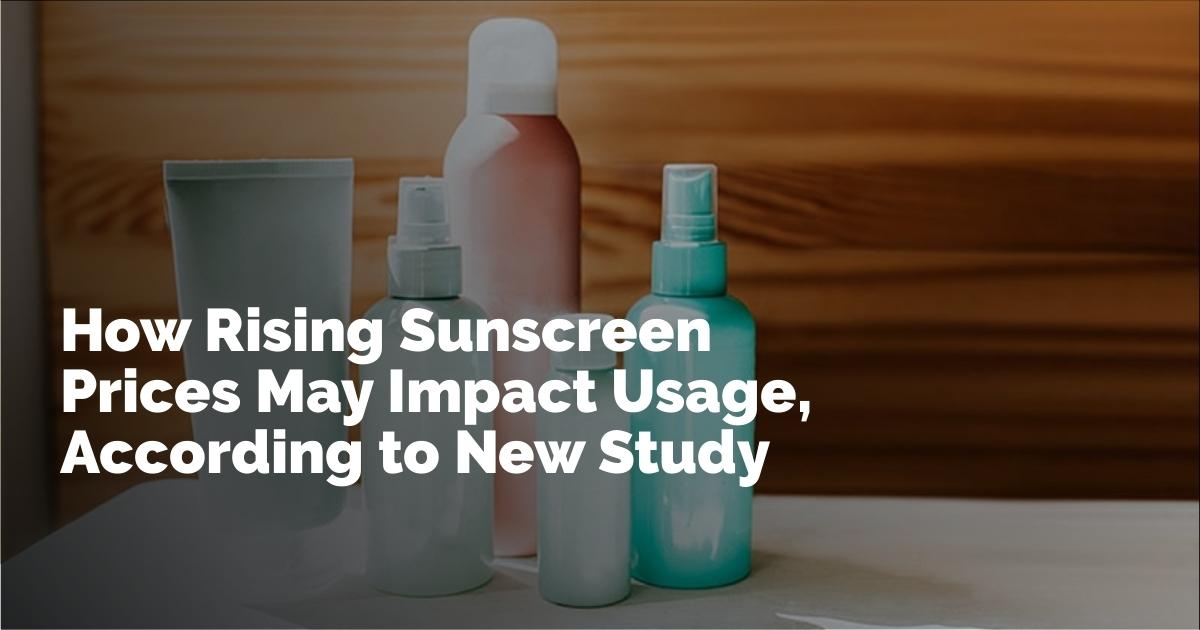The Impact of Sunscreen Cost on Application Habits
Sunscreen remains an essential part of protecting skin from harmful UV rays, yet a recent study has drawn attention to a potential issue regarding its usage. As the cost of sunscreen increases, people tend to use it less, potentially risking inadequate protection.
Study Overview and Methodology
Conducted by researchers at the University of California, San Francisco, this study delved into how sunscreen pricing affects application habits. Eighty-eight participants, mostly women with a median age of 50, were asked to apply sunscreen on either their arm or face/neck. The study employed a cross-sectional design, weighing sunscreen containers before and after application to determine usage.
Participants used a wide array of 32 different sunscreen brands, varying significantly in price—from as low as $0.60 per ounce to a steep $36.40 per ounce. The sunscreens also spanned SPF ratings from 30 to 100. Researchers calculated the cost per ounce using information from brand websites and mass measurements to ensure precise assessments.
Key Findings
A clear pattern emerged from the study: as the price per ounce of sunscreen increased, participants used less of it. Specifically, for every $1 per ounce increase in cost, there was approximately a 1% reduction in the quantity applied. This finding was statistically significant (P = .0016), indicating a direct correlation between price and the likelihood of underapplication.
Interestingly, participants tended to apply more sunscreen to their arms compared to their face and neck, regardless of the product's cost. The study highlighted a significant association between both the price of sunscreen and its application site with how much individuals applied (P less than .05).
Implications for Sunscreen Usage
The findings underscore important financial considerations for incorporating sunscreen into daily skin care. It suggests a need for comprehensive sun protection strategies that are not only effective but also financially sustainable. The researchers emphasized the importance of such strategies in reducing the financial and health burdens of excessive sun exposure.
Dermatologists are often asked for sunscreen recommendations, making it crucial for healthcare providers to consider cost-effectiveness when advising patients on sun protection options. By factoring in cost, dermatologists can better encourage patients to use sunscreen adequately, thereby improving protection against skin-related health issues like cancer.
Publication and Research Leadership
The study, led by Kristen Fernandez, BS, from the San Francisco VA Health Care System, was published online on January 13, 2025, in the Journal of the American Academy of Dermatology. This publication marks a significant step in understanding consumer behavior regarding skincare products.
Study Limitations
While informative, the study had its limitations. It did not gather data on the actual prices participants paid for their sunscreens, which could vary due to sales or discounts. Moreover, the analysis was limited to lotion sunscreens, excluding other types such as sprays and sticks that may influence application behavior differently.
Transparency and Disclosure
The research did not receive any external funding, and the authors reported no conflicts of interest. It's noteworthy that the study involved several editorial tools, including AI, but human editors meticulously reviewed the content before its publication. This approach ensures the accuracy and reliability of the findings.
The study's insights pave the way for further research and dialogue on the economic factors that influence skincare habits. Understanding these dynamics can lead to better consumer education and more tailored recommendations from healthcare providers, ultimately fostering healthier sun protection practices.
출처 : Original Source

